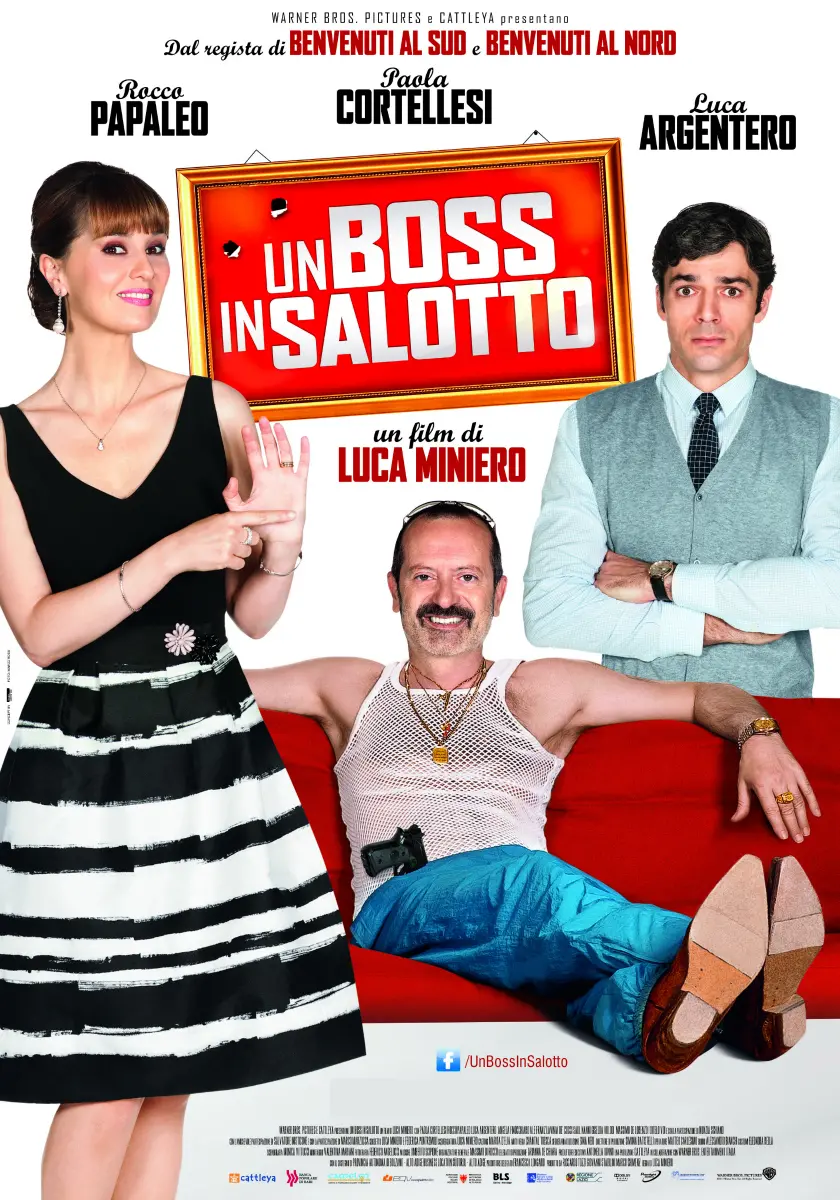
We use cookies
We use cookies and other tracking technologies to improve your browsing experience on our website, to show you personalized content and targeted ads, to analyze our website traffic, and to understand where our visitors are coming from.

Most of the film was shot in Alto Adige, more specifically in Bolzano, but also in Merano, Appiano, Bressanone and San Candido.
In the northernmost town, Bolzano, which one of the opening scenes gives us an aerial view of, from the hill and vineyards of Santa Maddalena to the railway area and piazza Walther, live the Cosos, an (almost) perfect northern family. They’re well-off and their aim in life is to accumulate social prestige.
It’s a family portrait that’s soon broken when, some scenes later, at the police station, not only the Neapolitan origins of Cristina, a.k.a. Carmela are revealed, but the existence of a brother too, Ciro, who the family thought was dead, and who has chosen to serve his house arrest at his sister’s house after being accused of having Camorra associations. The interiors of the police station were reconstructed in the former Magistrali Pascoli in Via Longon.
As well as the various exterior shots taken around the town, filming also took place at the local court, where the scene in which various witnesses are questioned about the boss in question was filmed, the cathedral, where this perfect family goes to church to carry on relationships that will help them to climb the social ladder, Palazzo Mercantile, where the Cosos delude themselves that their efforts have succeeded, the thermal baths in Merano, and a hotel in the Dolomites.
Most of the film was shot in Alto Adige, more specifically in Bolzano, but also in Merano, Appiano, Bressanone and San Candido.
In the northernmost town, Bolzano, which one of the opening scenes gives us an aerial view of, from the hill and vineyards of Santa Maddalena to the railway area and piazza Walther, live the Cosos, an (almost) perfect northern family. They’re well-off and their aim in life is to accumulate social prestige.
It’s a family portrait that’s soon broken when, some scenes later, at the police station, not only the Neapolitan origins of Cristina, a.k.a. Carmela are revealed, but the existence of a brother too, Ciro, who the family thought was dead, and who has chosen to serve his house arrest at his sister’s house after being accused of having Camorra associations. The interiors of the police station were reconstructed in the former Magistrali Pascoli in Via Longon.
As well as the various exterior shots taken around the town, filming also took place at the local court, where the scene in which various witnesses are questioned about the boss in question was filmed, the cathedral, where this perfect family goes to church to carry on relationships that will help them to climb the social ladder, Palazzo Mercantile, where the Cosos delude themselves that their efforts have succeeded, the thermal baths in Merano, and a hotel in the Dolomites.
In a film built, among other things, on the stereotype of the difference between people from the South, blundering big eaters and brusque opponents of the order, coldness and competitiveness of northerners, there couldn’t not be references to food. And it is around food that one of the biggest clashes takes place between Cristiana, who has scarpered from her Campanian roots (including abandoning her accent), and her brother Ciro, who, on the contrary, has remained true to them and simply doesn’t understand these dinners revolving around vegetables and dips.
So there are lots of references to local cuisine, starting with Brezen, a ring-shaped bread tied in a knot at each end, very popular in Alto Adige and among the German-speaking population, which Fortuna eats with her head hanging out the window on the car journey from home to school.
Canederli, bread gnocchi stuffed with speck or cheese and cooked in meat broth, are always present in the culinary references of the Coso family. Cristina prepares them for a dinner with the Manettis, the owners of the company that employs Michele and the entire town, together with other specialities, including a mix of cured meats and cheeses from Alto Adige. Pasta, pizza, parmigiana, and above all pastiera, are banned in the Coso household.

Cristina has built a dream life for herself in Bolzano, together with her husband Michele Coso and their two children, Vittorio and Fortuna. Her ambition and desire for social recognition are put to the test by the arrival of her brother, an alleged Neapolitan Camorra gang member.